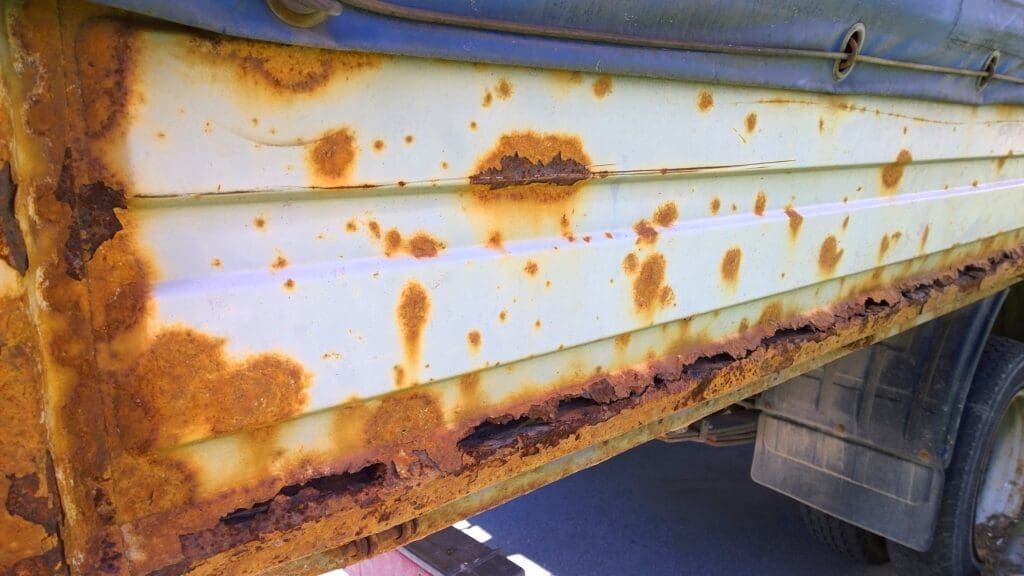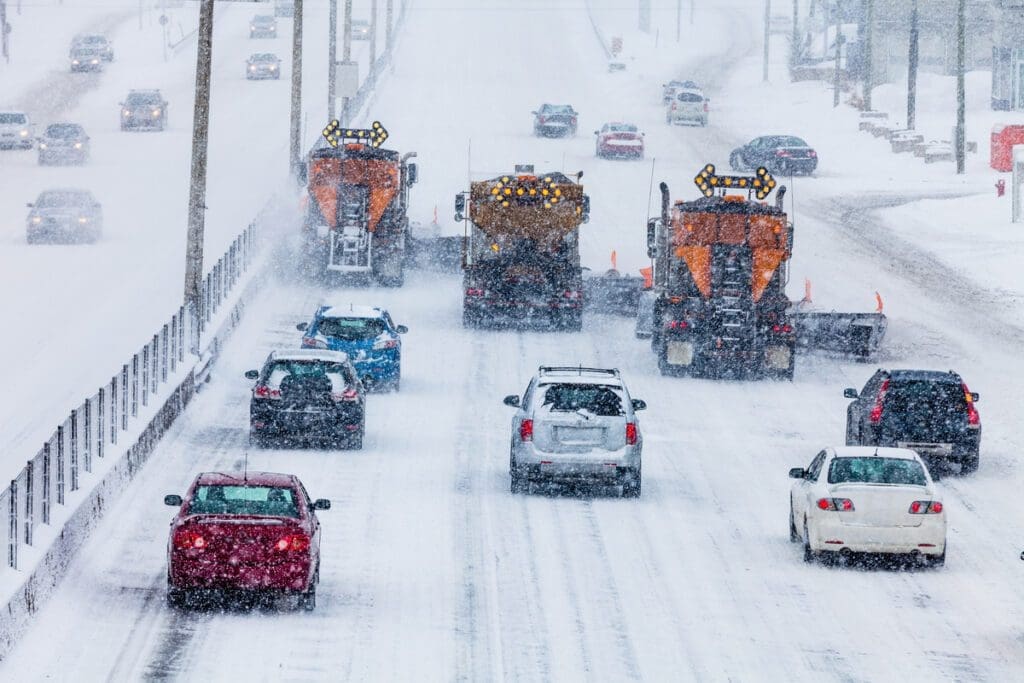As winter arrives, fleet owners face a familiar foe: the corrosive road salt. With proactive measures and strategic maintenance, you can safeguard your fleet from winter salt corrosion.

Understanding the Corrosive Mechanism of Winter Salt
Winter salt, a blend of sodium chloride and other minerals, dissolves in water, forming a brine solution. This solution seeps into the tiniest crevices of your vehicles’ paint, undercarriage, and metal components, initiating the corrosive process.
Corrosion happens when metal breaks-down, changing a once strong structure (or vehicle), into rust. If the rust breakdown is left unchecked, the rust can damage the integrity of the entire vehicle, shortening the lifespan of your fleet.

Identifying Signs of Winter Salt Corrosion
Early detection is crucial in the battle against winter salt corrosion. Be vigilant for these telltale signs:

- Rust spots speckling the paintwork
- Bubbling or peeling paint, exposing bare metal
- Holes or perforations in the body or undercarriage
- Loose or rusty bolts and screws, signaling structural weakening
- Squeaky or noisy suspension, hinting at corrosion-induced wear
- A noticeable drop in fuel efficiency, suggesting compromised aerodynamics
Shielding Your Fleet: Proactive Prevention Strategies
Prevention is the first line of defense against winter salt corrosion. Implement these proactive measures to safeguard your fleet:
- Regular Waxing: A protective wax barrier repels salt and shields the paint from corrosive elements.
- Frequent Washing: Regularly wash your vehicles, paying particular attention to the undercarriage, to remove salt deposits and debris.
- Puddle Avoidance: Navigate around puddles, as they often harbor concentrated salt solutions.
- Strategic Timing: Avoid driving immediately before or after snowstorms when salt concentrations are highest.
Combating Existing Corrosion: Restoration Tactics
If corrosion has already taken hold, swift action is paramount:

- Rust Removal: Tackle rust spots promptly using sanding, wire brushing, or rust-removing products.
- Body and Undercarriage Repair: Address holes or perforations promptly, seeking professional assistance if necessary.
- Bolt and Screw Replacement: Replace loose or rusty fasteners to prevent further damage and ensure structural integrity.
- Suspension Lubrication: Regularly lubricate the suspension to minimize noise, enhance performance and prevent corrosion.
- Regular Inspections: Schedule routine professional inspections to identify and address potential issues before they escalate.
Additional Defensive Measures for Enhanced Protection
Consider these additional measures for comprehensive protection:
- Undercoating: Invest in undercoating, a protective layer applied to the undercarriage, especially in areas with harsh winters.
- Protective Products: Utilize rust inhibitors, paint sealants and undercarriage coatings to bolster your vehicles’ defenses.
Winter salt corrosion poses a significant threat to your fleet’s longevity and operational efficiency. However, by adopting proactive prevention strategies, implementing timely maintenance practices, and utilizing specialized protective measures, you can effectively combat the corrosive effects of winter salt and ensure your fleet remains road-ready, season after season.
Remember, vigilance and timely action are your strongest allies in the fight against winter salt corrosion.
